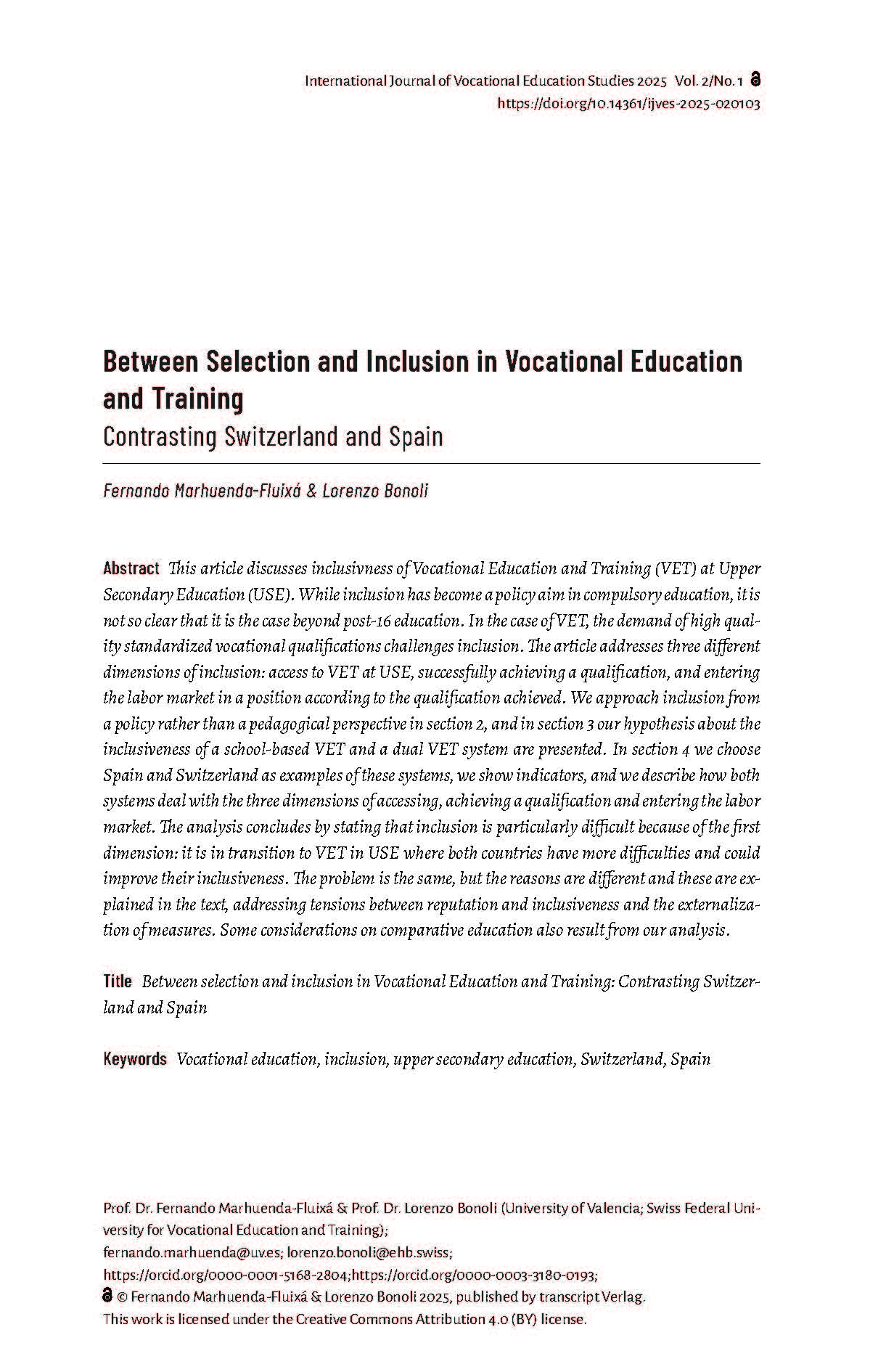Main Article Content

Abstract
This article discusses inclusivness of Vocational Education and Training (VET) at Upper
Secondary Education (USE). While inclusion has become a policy aim in compulsory education, it is
not so clear that it is the case beyond post-16 education. In the case of VET, the demand of high quality
standardized vocational qualifications challenges inclusion. The article addresses three different
dimensions of inclusion: access to VET at USE, successfully achieving a qualification, and entering
the labor market in a position according to the qualification achieved. We approach inclusion from
a policy rather than a pedagogical perspective in section 2, and in section 3 our hypothesis about the
inclusiveness of a school-based VET and a dual VET system are presented. In section 4 we choose
Spain and Switzerland as examples of these systems, we show indicators, and we describe how both
systems deal with the three dimensions of accessing, achieving a qualification and entering the labor
market. The analysis concludes by stating that inclusion is particularly difficult because of the first
dimension: it is in transition to VET in USE where both countries have more difficulties and could
improve their inclusiveness. The problem is the same, but the reasons are different and these are explained
in the text, addressing tensions between reputation and inclusiveness and the externalization
of measures. Some considerations on comparative education also result from our analysis.
